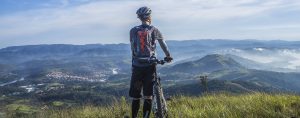Researchers from Columbia University’s Earth Institute conducted a study on various wild fish species that are usually eaten as a dish in the Peruvian Amazon. However, the study findings show that if the depletion of fish biodiversity continues in the area, people could experience major nutritional shortages. According to the study, substitute fish sources like aquaculture isn’t enough to recoup nutrients lost if fish biodiversity is depleted.
A team of researchers studied the Peruvian Amazon’s Loreto department, where townsfolk consume about 800,000 fish everyday. Loreto by the way,has the largest population of indigenous folks in Peru. The people in the area has fish as their primary source of fatty acids, protein and important minerals such as zinc, calcium, and iron.
Still, the purely fish diet is not enough as their study shows that about a fourth of the children in the community are either growth-stunted or malnourished. . Furthermore, about one-fifth of Loreto women belonging to the child-bearing age group are suffering from iron deficiency.
The research suggested that such effects occur not only in the Amazon only but globally, Food being gathered in the wild is dwindling particularly in rivers, lakes and even on land across the globe. It is estimated that about 2 billion individuals worldwide rely on food that are non-cultivated. Statistically, inland fisheries by itself is being utilized by 60 million people as source of protein for 200 million people.
Director of Columbia University’s Earth Institute Center for Environmental Sustainability and senior co-author of the research, Shahid Naeem, mentioned that if the fish declines continue, the nutritional quality of Loreto community’s diet will do too. Naeem added that the decline is happening now and it is only a matter of time for everything to crash soon.
Poultry as Potential Solution to Decline Might Not be Ideal Either
Some influential organizations like the World Bank has introduced raising of farm chickens and adopting aquaculture as solutions. While they are already trending in the Loreto department of the Peruvian Amazon, they also raised some concerns.
The downside of the trend being encouraged is that compared to fishing, aquaculture and chicken farming applies more pressure to the environment. Additionally, lead author Sebastian Heilpern mentioned that forests are cleared to gather feed. Animal farming also yields more greenhouse gases, which are harmful to the ozone layer, while nearby bodies of water are exposed to pollutants.
In the meantime, Mr. Heilpern is currently in collaboration with the Wildlife Conservation Society to create a guide illustrating the nutritional values of the region’s local fish. They are hoping to give the consumers and fishermen a far greater understanding of the fish’s value. Other authors who took part in the study include Cornell University researchers Alexander Flecker, Kathryn Fiorella, and Suresh Sethi and Earth Institute’s Ruth deFries and Maria Uriarte. .

